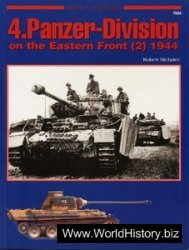As demand expanded, agricultural production, aided by exceptionally good weather, climbed at the remarkable rate of 5 percent per year. This figure may be compared with the average during World War I, when agricultural production increased at 1.7 percent per year. Price controls during the war were purposely made less effective for agricultural than for nonagricultural commodities; consequently, the prices of farm products rose more rapidly during the war than the prices of the things that farmers had to buy.
During 1942, emphasis was placed on the necessity of stimulating particular kinds of output, notably meats and the oil-bearing crops, and avoiding a repetition of the price collapse that followed World War I. Legislation of October 1942 set final policy for the war period and for two postwar years. The 1942 act provided minimum support rates of 90 percent of parity for basic commodities; the supports were to remain in effect for two full years, beginning with the first day of January following the official end of the war. Price ceilings on farm products were set at a maximum of 110 percent of parity.
Not all agricultural products, however, were treated equally. Cotton supports were set at 92.5 percent of parity and draft exemptions were provided for workers producing long-fiber cotton, which was demanded for a number of war-related uses (Maines
1993). The secretary of agriculture, at his discretion, could leave wheat and corn supports at 85 percent of parity if he felt that higher prices would limit available quantities of livestock feed. It is not entirely beside the point to note that cotton and beef interests were strongly represented by congressmen, some of whom had reached powerful positions through their seniority.
During the war and during the first two postwar years, price supports were not generally required. Because of the great demand for most products, agricultural prices tended to push against their ceilings. For some meats and dairy products, it was even necessary to roll back retail prices in an effort to “hold the line” against inflation. In such cases, to prevent a reduction in the floor prices received by farmers, meatpackers and creameries were paid a subsidy equal to the amount of the rollback on each unit sold.
The war enabled the Commodity Credit Corporation (CCC) to unload heavy inventories that had built up between 1939 and 1941. From 1944 to 1946, loans extended by the CCC were small. Foreign demand through the United Nations Relief and Rehabilitation Administration and military governments and an unexpectedly high domestic demand led to highly favorable postwar prices and lightened CCC loan and purchase commitments. Indeed, contrary to the predictions of many experts, the demand for food, feed, and fiber was exceptionally high after the war. The removal of price controls in the summer of 1946 permitted all prices to shoot up, but the rise in agricultural prices was steeper than the price rise in other areas. Most production restrictions on crops were canceled before or during World War II, and by the spring of 1948, only tobacco and potatoes were still controlled.




 World History
World History









